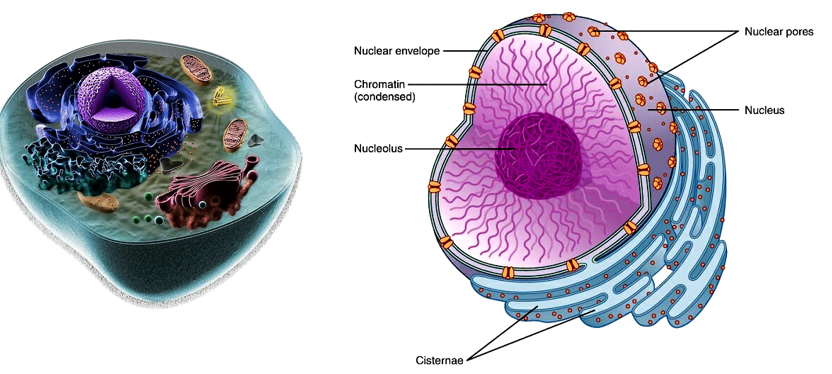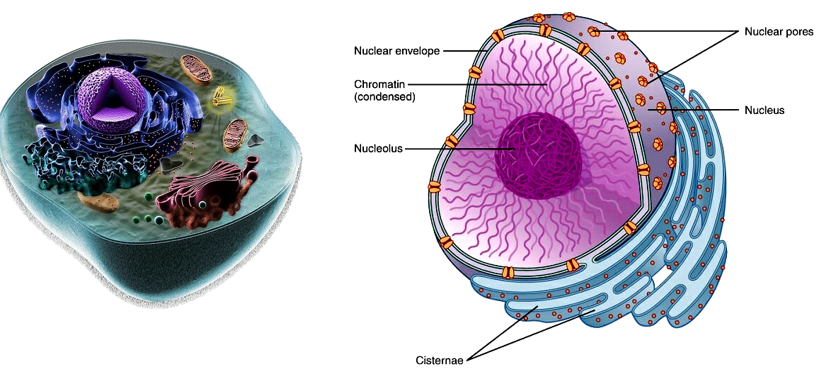Nucleus is the heart of the cell. It controls all the cellular activities. So it is referred to as the controlling centre of the cell. It was first discovered by Robert Brown in 1831. The study of nucleus is termed as Karyology.

- Nucleus is present in all eukaryotic cells except mature RBC of humans and some lens cells of the eye.
- Cells are mostly uninucleate (single nucleus).
- But some algae and fungi are multinucleate and the condition is called coenocytic. e.g. Caulerpa, Vaucheria etc.
- The four main parts of nucleus are nuclear membrane, nuclear sap, nucleolus and chromatin reticulum.
Nuclear membrane:
- Nucleus is separated from the cytoplasm by a semi-permeable membrane called the nuclear membrane or karyotheca or nuclear envelope.
- It is double layered and lipoproteinaceous in nature like the plasma membrane.
- The outer layer is called ecto-karyotheca and the inner layer is called endo-karyotheca.
- They are separated by a perinuclear space.
- The outer membrane is continuous with membranes of endoplasmic reticulum, Golgi complex etc.
- The inner membrane encloses the nuclear contents and is smooth, while the outer membrane is rough due to the presence of ribosomes.
- The inner surface has a protein lining called the nuclear lamina, which binds to chromatin and other nuclear components.

- The nuclear membrane contains many small openings called nuclear pores, which helps in the passage of macro molecules from and into the nucleus.
- Nuclear pores are enclosed by circular structures called Annuli (Annulus-singular). It regulates the exchange of molecules.
- The pores and annuli together are called pore complex.
During mitosis, or cell division, the nuclear envelope disintegrates, but reforms as the two daughter cells complete their formation.
Nuclear sap:
- The nucleus is filled with a transparent, granular and slightly acidophilic substance called nuclear sap or nucleoplasm or karyolymph.
- The nucleus components such as chromatin threads, nucleoprotein granules, nucleolus etc. are suspended in the nucleoplasm.
- The nuclear sap contains organic and inorganic substances like nucleic acids, proteins, enzymes and minerals.